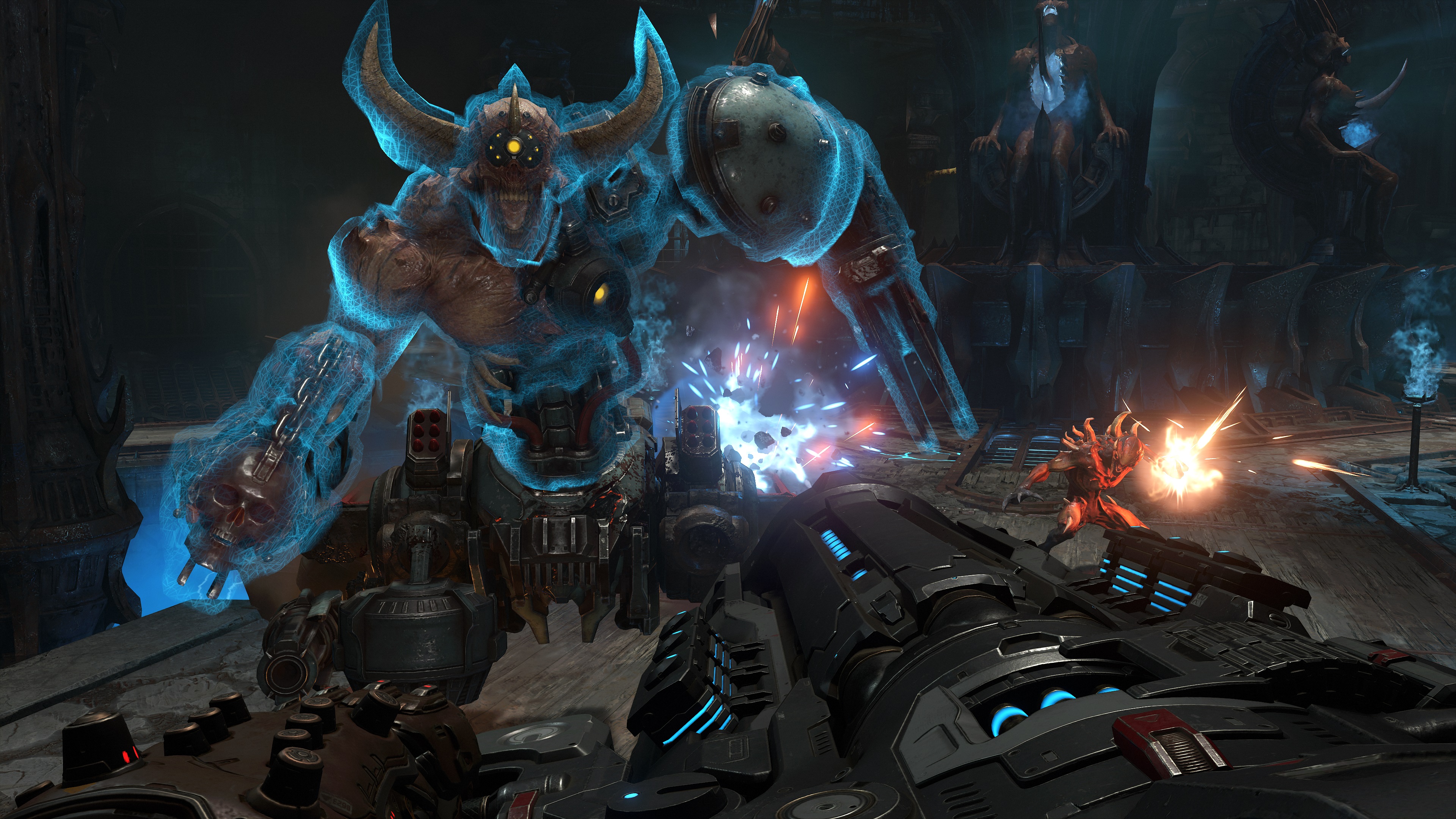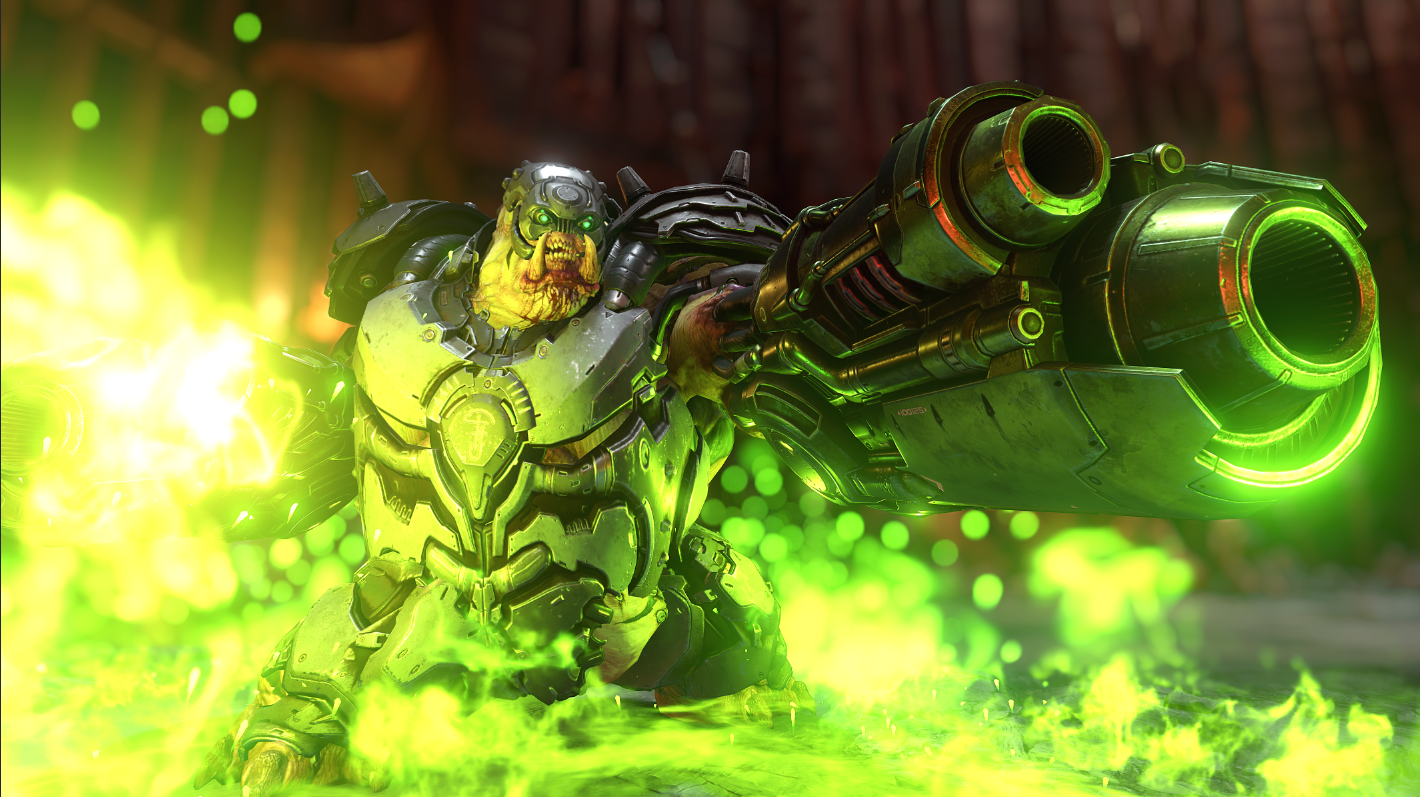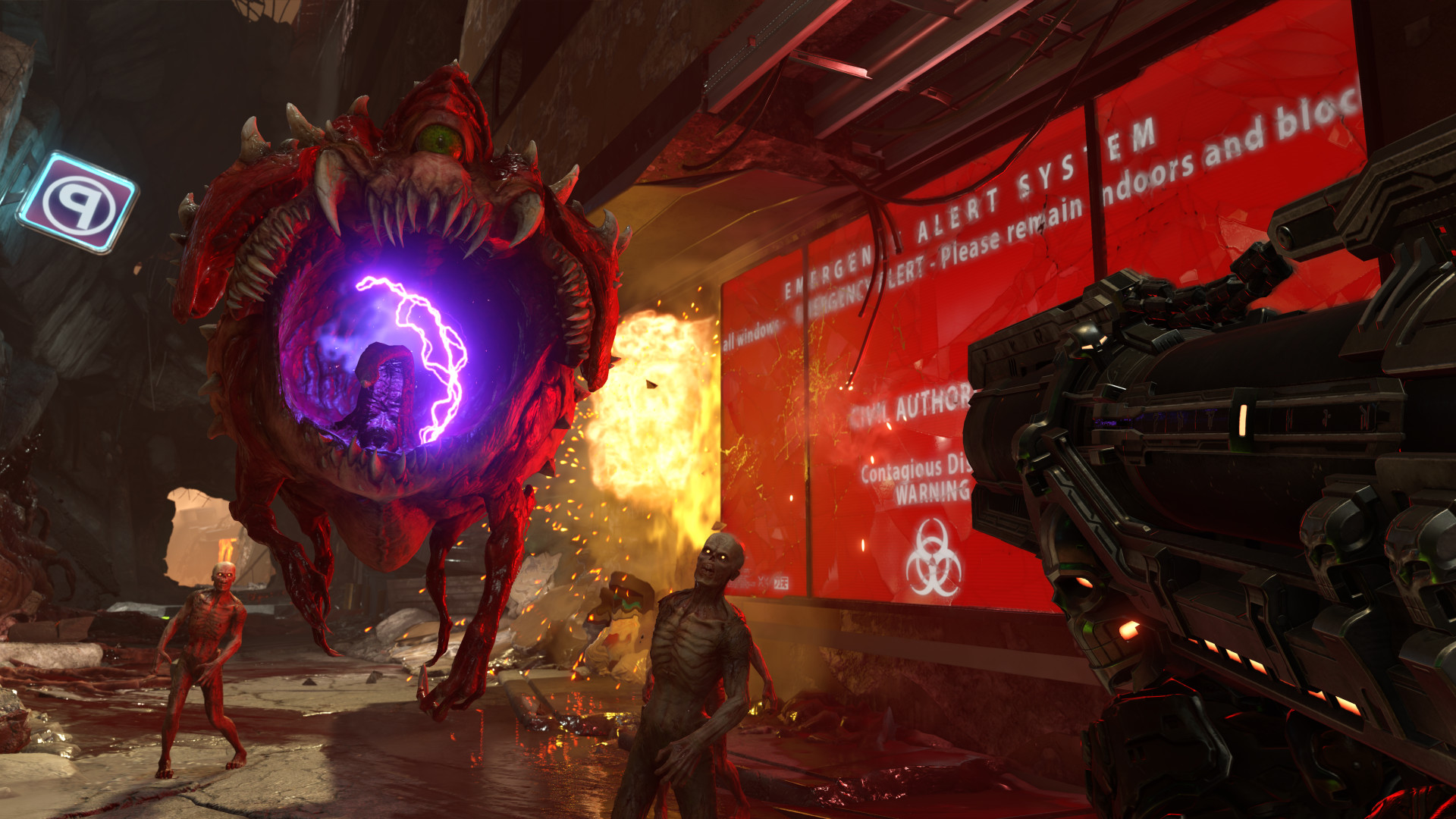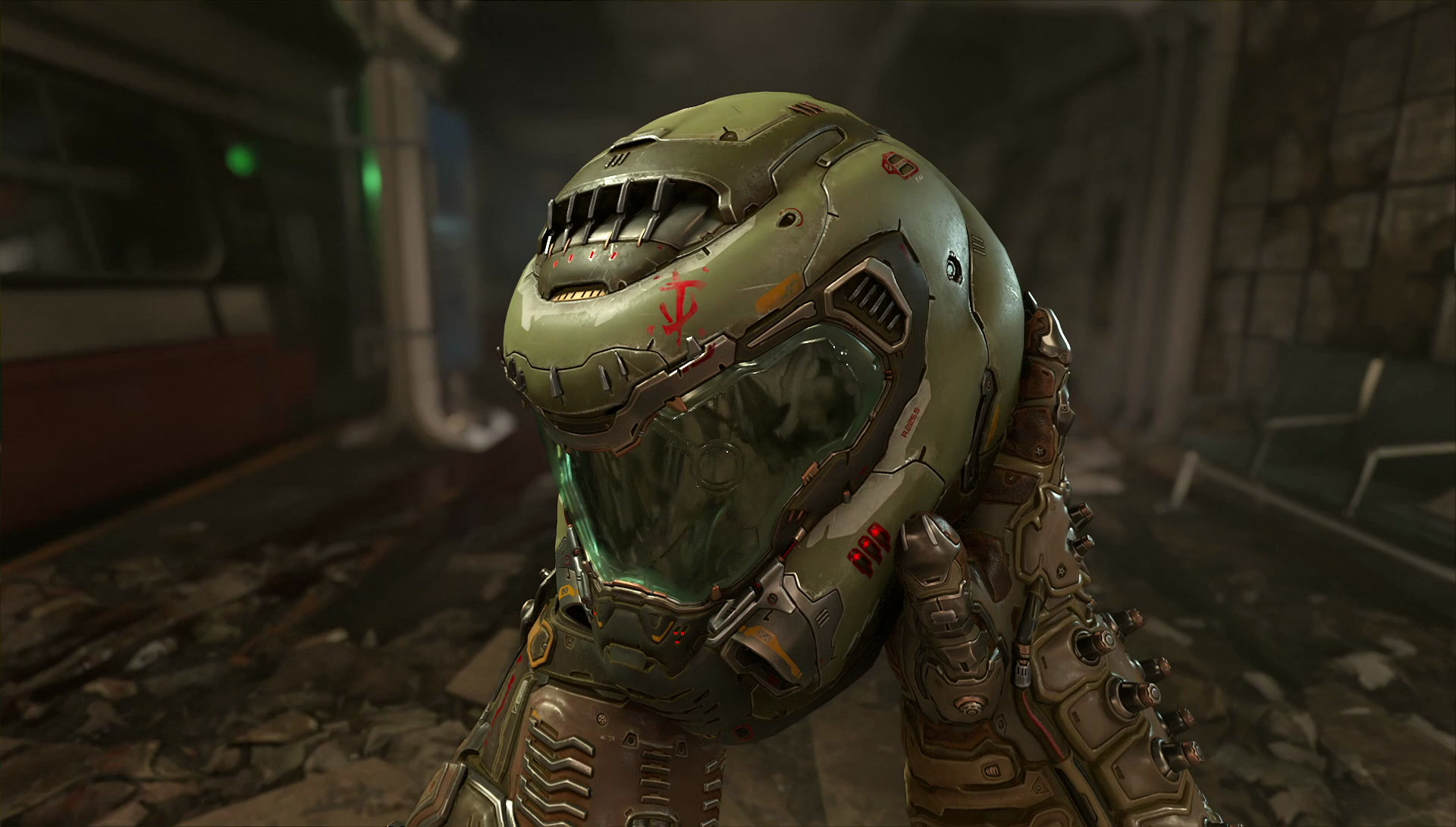Doom Eternal’s hellish vision of Earth is a bloody good time
The Doom Slayer returns

Shooters have changed a lot in the last decade or so. In the past, we never questioned our character’s motives, and pulled the trigger on any living thing without a second thought. However, detailed graphics and sophisticated storylines have helped introduce the concept of morality into what were once straightforward affairs. Some games offer nonlethal playthroughs, or at least make you question your decisions and face the consequences of your actions.
Doom Eternal ($60) is not that kind of game.
There’s something so pure about the Doom Slayer’s mission, which has been largely the same since 1993. Whether on Mars or in hell, he’s there to slay some demons. There’s no ambiguity about it. He’s not gunning, burning and chainsawing humans, after all. The foes in the Doom franchise are straight-up hellbeasts bent on destroying everything around them, and ripping them apart just feels good.
Doom Eternal, the follow-up to Bethesda Softworks’ 2016 Doom reboot, continues the series’ legacy in a glorious fashion. Set two years after the events in the previous game, Eternal sees the Doom Slayer return to Earth, which is now overrun with demons. During a hands-on session in Los Angeles last week, I got to spend three hours with Eternal’s fast-paced combat and found out just how id Software built on Doom (2016) to make an even deeper, smarter power fantasy.

Of demons and chainsaws
While Doom (2016) was a modern take that revived the franchise after a lengthy hiatus, the game wasn’t without faults. The environments were too similar, and the game could feel repetitive after about an hour or so. It was great fun in short stints, but lacked depth. The developers have heard and responded to that feedback, adding more “nutritional content,” in the words of director Hugo Martin. In a brief presentation, Martin explained how his team at id expanded the scope of Doom Eternal to fight the monotony. I got to experience those changes firsthand during the game's first three hours.
Not everything has changed, of course; Doom Eternal is still Doom, underneath everything. Like previous games in the series, Eternal pushes the player forward constantly, and makes it hard to stop moving. You’re always on the lookout for ammo, armor and health pickups. Staying in one spot for more than a second or two is usually a death sentence. This makes Doom Eternal feel frantic and sometimes a little overwhelming — and that's by design.
“The goal is not to make a hard game,” Martin said. Instead, that feeling of being overwhelmed — and occasionally frustrated — is there to push players into the “right way to play.” That right way includes aggressive resource management, because ammo is scarce. There were multiple times during my playthrough when I found myself running to every corner of the map, trying to find a few spare bullets or a can of oil. After the first hour, I was a lot more careful about how I used my weapons, taking care not to fire until I had a good shot lined up, and making use of melee-based glory kills whenever I could.
Yes, glory kills are back, and it’s as satisfying as ever to stagger a demon, then find creative ways to tear it apart. Eternal is also quick to give you increasingly powerful weapons, starting you off with a combat shotgun, then almost immediately getting that coveted chainsaw in your hands.
For players who want even more of a challenge, there are multiple difficulty levels, as well as an old-school mode that uses lives instead of reloads. If you get killed and run out of lives, you’re done. There’s also what Martin calls “dynamic difficulty,” which are little challenges that make every playthrough a bit different. For example: If someone in your "network" gets killed by a demon and you encounter that same demon, you might find it “empowered” — a hell of a lot stronger, in other words.
(Martin couldn’t specify exactly what “network” meant in this context. It likely means "players on your friends list," but the scope could be a little bigger.)
You’ll also find extra lives sprinkled throughout each level, which can revive you immediately upon death instead of kicking you back to the last checkpoint.
There’s something almost wholesome about the whole experience, which sounds odd when considering how much time you’ll spend tearing demons limb from limb, ripping out eyeballs and spraying your surroundings with blood.
The game is gory, but not gratuitous, thanks in part to the developers skipping the gritty realism embraced by modern shooters, and returning to a classic art style that simply screams "over-the-top ‘90s aesthetic." I found myself feeling nostalgic when fighting classic Cacodemons and Hell Knights, which appear alongside some new baddies. Some of the most prominent new enemies I encountered were flying Gargoyles, which attack from above, making them dangerous and hard to pin down. The enemies I encountered during the demo are representative of the game itself: plenty of nods to the original, but also full of fresh ideas.

What's new in Doom Eternal
So what’s changed? For one thing, there’s a lot more variety in the environments of Doom Eternal. The first few missions take place on a hellish version of Earth, complete with red skies and ravaged architecture. But the Doom Slayer’s journey takes him to other realms as well. There’s Exultia, a high-tech, futuristic-looking forsaken city. You'll travel there in your mission to eliminate the Hell Priests who are causing Earth’s demonic invasion. I also got a look at a remote cultist base, its snowy surroundings acting as a stark contrast to the earlier hellish levels.
This time around, there's also a lot more platforming. Double-jumping, dashing, wall-climbing and swinging from bars are all part of the formula, and you'll often have to manage these abilities while avoiding foes and deadly obstacles. As Martin predicted, I did get frustrated from time to time as I missed a platform and fell into the abyss below, but that was usually followed by the satisfaction of getting that chain of jumps, dashes and grabs just right.
While the game build that Bethesda showed off last week was fully playable, it’s not 100% complete. There were a few crashes and load screen freezes, serving as a reminder that Doom Eternal isn’t quite done yet, even if it’s pretty close. A delay from November 2019 to March 2020 served the game well, Martin told us: “It’s been great having the extra time, and I think it shows up on the screen.”

A hell of a good time
In a Q&A session after the demo, Martin expanded on how the developers used those extra months to refine and polish the Doom Eternal power fantasy. In particular, id wanted to polish the pacing to ensure that the player never gets bored. The game might push you to the brink of your patience, but you’ll want to come back for one more try, even if “one more try” turns into “five more tries.” Whereas Doom 2016 sometimes became repetitive and tedious, Doom Eternal will always give the player a reason to keep going. In fact, the three hours I spent playing it simply flew by, and I found myself unable to get it out of my head for the rest of the weekend.
“This is very much our Evil Dead 2,” Martin said, referring to Sam Raimi’s comedy/horror film, which built on its predecessor in ways that came to define the franchise. He acknowledged Doom’s legacy and influence on the FPS genre, and that he and his team were “standing on the shoulders of giants."
But ultimately, Doom Eternal works because of everything that made the original game work..
“That original design is still good,” Martin said. “It’s a thinking person’s action game.”
That doesn’t mean you’ll be presented with massive info dumps and lengthy cutscenes — although there is plenty to learn in the Codex, if players care to read it. Doom Eternal is constantly changing and challenging you in new ways, but at its core, it’s fast, frenetic and fun as hell. It doesn’t have the genre-defining impact of the early games in the series and it’s not going to change your life, but who cares when it’s such a rip-roaring good time?
Doom Eternal will launch on March 20, 2020 for PC, PlayStation 4, Xbox One, and Google Stadia, with a Switch version coming later this year.
Sign up to get the BEST of Tom's Guide direct to your inbox.
Get instant access to breaking news, the hottest reviews, great deals and helpful tips.

Sarah is a writer, editor and consultant with a focus on video games and pop culture. Alongside Tom's Guide she has contributed to publications including IGN, Polygon, Variety, NBC News, Nerdist and Ars Technica.
